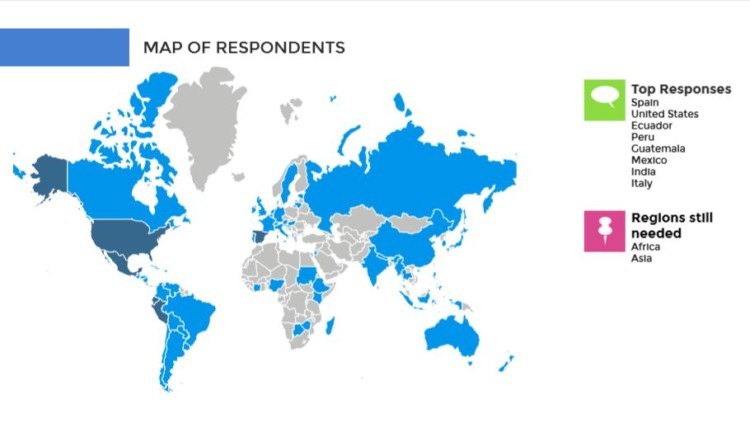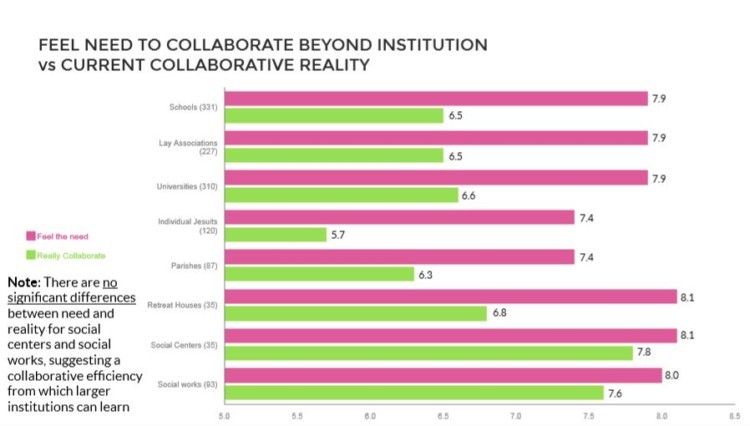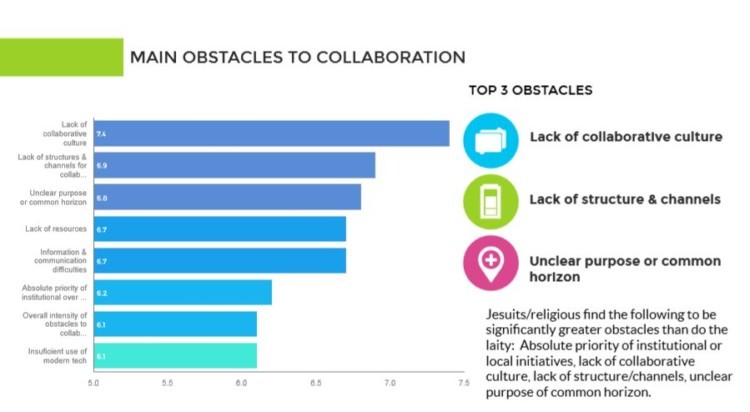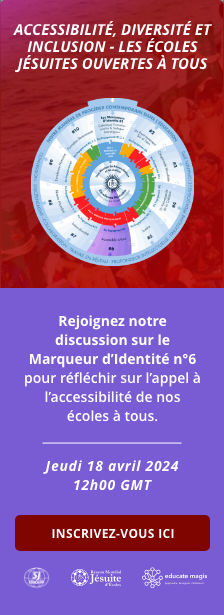From May to August 2017, the Jesuit Networking initiative, led by Entreculturas, launched a survey to better understand the dynamics of collaboration when it comes to the Universal Mission of the Society of Jesus. The survey was answered by 2,710 people, including alumni, collaborators, Jesuits, professors/teachers, members of CLC/CVX and many other groups linked to the Jesuit Mission around the world. The results greatly help us to better understand the main factors that favor or hinder international collaboration. We invite you to download the PDF with the main results of the survey.
There is a lot of information included in the results of the survey that will take us time to analyze, but at this moment, we leave you with 10 main conclusions:
- Educational institutions are without a doubt our point of contact with the world. In the digital world, our main group of influence is that of the alumni of schools and universities, with more than 25 years of involvement with our mission.
- Although there are responses from almost all parts of the world, we are not geographically balanced, and our « snowball » survey has had difficulty finding answers from Asia and Africa.
- Of all the international Jesuit networks, the most recognized are Fe y Alegría, CLC, JRS and the Apostleship of Prayer.

- It is interesting to see how the feeling of being part of « something greater » is very shared (Greater than 8 out of 10), especially through identity and values (8.2), spirituality (8.1) and a sense of purpose (7.9). Lay colleagues feel less connected to the Jesuit network than members of the Society of Jesus, and their sense of belonging is primarily based on mission and a sense of purpose.
- All apostolic sectors feel a great need for collaboration (somewhat less in the case of parishes and individual Jesuits) but is mainly in the social apostolate where this collaboration looks like taking place. It is very interesting how in educational institutions, there is more difference between the need for collaboration and the reality of it.

- The overall interest in collaborating is very high (8.1), especially focused on sharing good practices, knowledge and strengthening Jesuit identity and values. The main key that drives collaboration is the interest in strengthening Jesuit identity and values. Sharing resources and common projects are also two important collaborative drivers.
- The main themes for collaboration include peace and reconciliation, education, social issues (human rights, migrants and refugees, solidarity, marginalization) and youth.
- The main obstacles to collaboration are the lack of collaborative culture (7.4), structures for collaboration (6.9), unclear purpose (6.8), lack of resources (6.7) and communication difficulties (6.7). When asked to explain the reasons, they include overload and time constraints (15%), local mentality (13%), lack of clarity on the benefits (13%), lack of inclusion of the laity (12%) and lack of opportunities or knowledge on how to connect (12%).

- The suggestions to improve collaboration are to offer more information on how to participate (16%), have clear objectives and purposes (13%), training (13%), better communication (11%) and better use of the laity (10%).
- Respondents are willing to invest talent, time and contacts, although not as much to invest funding. Digital communication tools (on-line communities, contact databases, geolocation apps) are the preferred means to collaborate with the mission, together with regional coordination meetings. They show a lot of openness to working through mail and social networks.
It is interesting to note that 36% of the survey was answered in English, 35% in Spanish and 12% in French, which indicates certain tendencies in the use of languages in the current « Connected Society. »
These are our main conclusions, but we recommend you download the results and tell us what most strikes you.
To what extent do you think this information can help us improve our collaborative projects in the future?
What is it that surprises you most when reading the survey?
Do not hesitate to leave us your answers in the comments bellow.
Se connecter ou Adhérer
pour créer et afficher des commentaires

